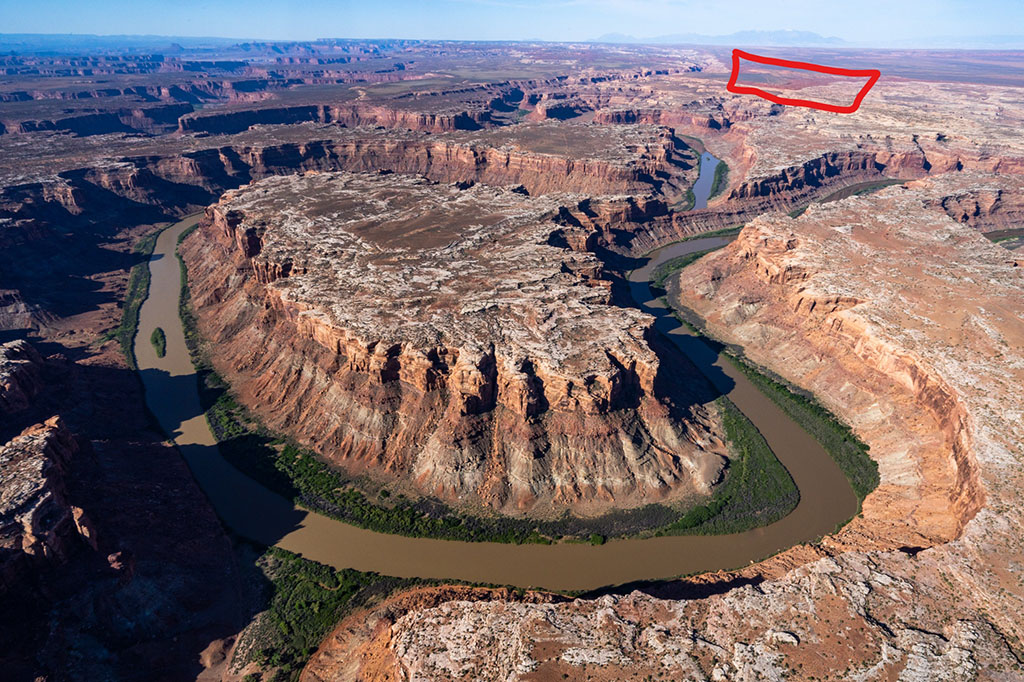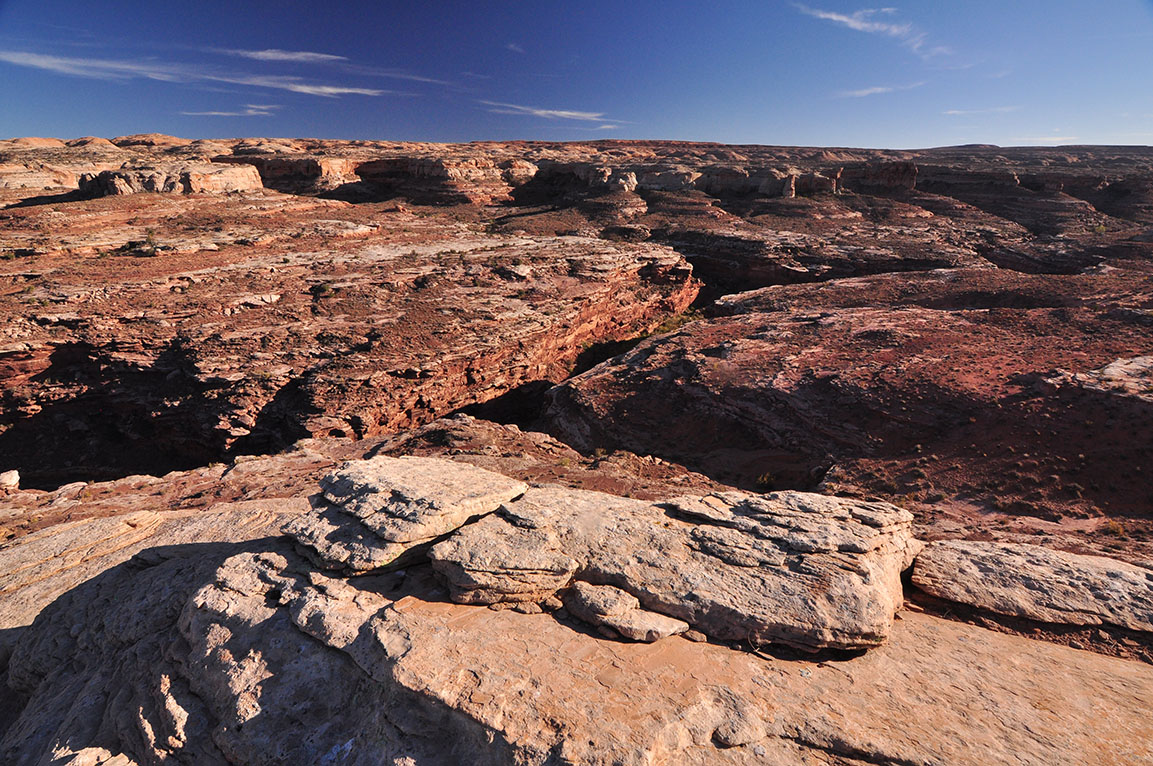
One month before the largest wilderness bill of the last ten years became law (the Emery County Public Land Management Act, signed into law as part of the John D. Dingell Jr. Conservation, Management, and Recreation Act on March 12, 2019), the Bureau of Land Management (BLM) rushed to issue a lease to drill in the heart of the Labyrinth Canyon Wilderness, which was formally designated as wilderness by the Dingell Act.
The BLM had full knowledge that lands encompassing the leased area would soon be designated as wilderness — but went ahead and issued the lease anyway.
Now, the BLM has prepared a draft environmental assessment (EA) to approve a helium drilling project on this lease. The public comment period is open through November 4, 2020.
Click here to tell the BLM not to allow drilling in the heart of Labyrinth Canyon Wilderness!
If allowed to proceed, this development will include, at a minimum, road improvements (upgrading and graveling of existing two-tracks), well pad construction (5-7 acres of disturbance), pipelines, infrastructure on the well pad, and a 10-acre processing facility on nearby state lands. The project developer is drilling at least two wells for helium, which requires a federal oil and gas lease to develop and which will have many of the same on-the-ground impacts as conventional oil and gas drilling.

The Labyrinth Canyon section of the Green River, which was designated under the Wild and Scenic Rivers Act as a “Scenic” segment, is one of the most iconic, remote, and world-renowned river segments in the United States.
Please contact the BLM today. Tell them:
- Labyrinth Canyon Wilderness is too special to drill (this includes the wilderness area itself as well as the adjacent Labyrinth Canyon Scenic segment of the Green River).
- The area is very remote, quiet, and scenic, and industrialization of the area will significantly degrade—or destroy—these values.
- Both the lease and this last minute rush to approve development before a potential change in presidential administration highlights everything that is wrong with the Trump administration’s “energy dominance” agenda. A new administration should cancel this lease and eliminate the “energy dominance” agenda.
>> Click here to submit your comments today.
Additional Background
December 2018 Lease Sale
The BLM offered, sold, and issued the lease in questionas part of the December 2018 oil and gas lease sale. SUWA and our conservation partners protested the leasing decision, however, BLM denied the protest and issued the lease.
Some facts about the lease:
- This lease was a last-minute gift to industry by the Trump administration, issued with full knowledge that the leased area would shortly be designated as wilderness.
- The BLM did not prepare site-specific analysis under the National Environmental Policy Act (NEPA) prior to offering the lease for development. Instead, the BLM prepared a “Determination of NEPA Adequacy” (DNA), which is not a NEPA document, and does not contain NEPA analysis. A DNA is an “administrative convenience” which relies entirely on existing NEPA analysis to justify the agency’s decision.
- The BLM did not allow for public participation before it offered, sold, and issued leases from the December 2018 lease sale. That is, there was no public comment period on the proposed leasing decision. Instead, the BLM posted the final decision to its ePlanning website, which started an abbreviated 10-day (normally a 30-day) protest period.
- Federal courts have concluded that similar limitations on public participation were unlawful.
- The BLM issued the lease on February 8, 2019. The lessee is Twin Bridges Resources, LLC.
- The lease is located at the eastern edge of the San Rafael Desert in Emery County, Utah. It is encompassed entirely by the Labyrinth Canyon Wilderness area, as designated in the Dingell Act.

John D. Dingell Jr. Conservation, Management, and Recreation Act
On March 12, 2019, President Trump signed the Dingell Act into law. Section 1231(a)(7) of the Act created the Labyrinth Canyon Wilderness. As noted above, the wilderness area encompasses the Twin Bridges lease.
After the Dingell Act became law, the lessee—Twin Bridges—actively lobbied to have the wilderness boundary redrawn to eliminate their lease from the wilderness area. On March 25, 2019, the company sent a letter to the House Natural Resources Committee stating, “[w]e write today to urge you to correct the boundary of this Wilderness area to exclude [our] helium leases.” Congress did not adjust the wilderness boundary in response to the letter.
The San Rafael Desert Master Leasing Plan
In 2010, the BLM designated five Master Leasing Plan (MLP) areas in Utah, including one for the San Rafael Desert (where Twin Bridges’ controversial lease is located). The purpose of these planning areas was to allow the BLM to assess the suitability of these areas for oil and gas development and allow public input. The BLM completed planning for one of the five areas (Moab) before the program was cancelled by the Trump administration.
Notably, while the MLP concept was in place, the BLM did not offer any new leases in MLP areas, including the San Rafael Desert. The Trump administration’s “energy dominance” agenda eliminated the MLP concept (and halted all ongoing MLP planning processes, including the San Rafael Desert MLP).
In other words, the Twin Bridges’ lease would not have been offered if the MLP process was still ongoing (and then not offered at all because of the wilderness designation) and, assuming the BLM had completed the San Rafael Desert MLP, the lease may have been offered but with stringent no-surface occupancy stipulations.

